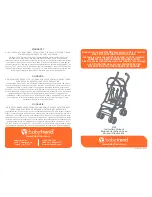
Page 75
©
2017 Sensata Technologies
Maintenance and Troubleshooting
5.2 Basic
Troubleshooting
The PT-100 charge controller is a fairly simple device to troubleshoot. The following chart is designed
to help you quickly pinpoint the most common charge controller failures. If a fault code (F##) is
shown on the display, refer to Sections 5.3 and 5.4.
Table 5-1, Basic Controller Troubleshooting (Remote not available)
Symptom
Possible Cause
Recommended Solution
No display and all
LEDs are off.
Battery voltage and PV voltage is too low.
Check battery voltage at the charge controller’s
terminals. If sun is shining, check fuses/circuit-
breakers and cable connections.
Controller is in PowerSave mode.
Normal operation - Press any front panel button
to bring the controller out of PowerSave mode.
Low charging rate. Display is showing P03, meaning the internal
temperature of the charge controller is very
high. The charge rate has decreased to prevent
the controller from shutting down.
When the unit has cooled, the charge rate will
automatically increase.
Low PV input power.
Check for array shadows, overcast or low sunlight.
Batteries not
charging.
Loose or corroded battery cables.
Clean and tighten battery cables.
Defective batteries.
Replace batteries.
While charging, the
DC charge voltage
is higher or lower
than expected.
If the Battery Temperature Sensor (BTS)
is installed, the DC voltage will increase or
decrease depending on the temperature around
the BTS.
This is normal, see Section 4.7 (Battery Temperature
Sensor Operation) for more information.
FAULT LED
BLINKING
No PV Input Fault -
The PT controller turned off because there has been no source
of PV power detected on the PV input terminals ((i.e., PV+ to PV-) for more than
24 hours. This can be caused by an open breaker to the PV input, a bad PV wire
connection to the PV input terminals on the PT controller, or a long period (>24
hours) of no sun or very low sun.
Remedy:
The fault will automatically clear and the controller will resume
operation once the voltage to the PV input terminals is >5 volts above the
battery voltage.
This fault can also be cleared manually (for another 24 hours) by pressing the
RESET button for one second.
FAULT LED
ON
Internal Power Supply Fault -
The PT controller turned off because the voltage
from the auxiliary power supply in the controller has dropped to a low level.
This can be caused if: a) the unit is in an area that is below normal operating
temperature, or b) if there is a load on the PT NETWORK or STACK port.
Note:
This can happen if an accessory cable that is plugged into the PT controller has
shorted, or an accessory—that should be powered externally—is plugged into the
PT and is attempting to be powered from one of the ports on the PT controller.
Remedy:
a) Ensure the unit is in an area that is within the normal operating
temperature, or b) Remove any cable plugged into the NETWORK (or
STACK) port and also check these two ports for debris; then, clear the fault
by pressing the RESET pushbutton for one second. If the fault continues—
after removing all cables, checking the ports for cleanliness, and pressing
the RESET button—then the controller will require service.
5.3 Troubleshooting Based on Fault Codes
When the PT controller detects a fault condition, the FAULT LED turns on and a fault code number
(F##) appears in the digital display to identify the problem. The following table describes each
fault code and any suggested corrective actions to be taken for each code.
Table 5-2, Fault Code Descriptions
















































